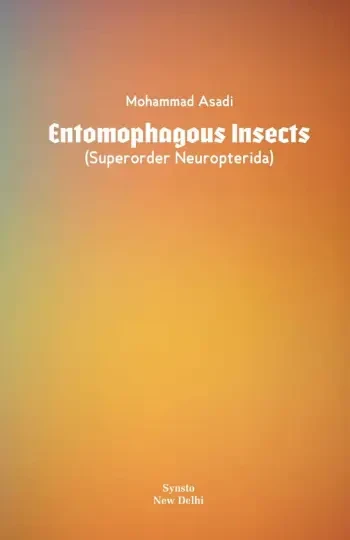
Entomophagous Insects (Superorder Neuropterida)
Product Code: BOOK-22-11 | Genre: Educational & Professional | Subject: Entomology
| Author | : | Mohammad Asadi |
|---|---|---|
| Number of Pages | : | 93 |
| Language | : | English |
| Publication Date | : | 11-01-2023 |
| Year | : | 2023 |
| ISBN Number | : | 978-81-960366-0-7 |
| Binding | : | eBook |
Price Details
About the Book
Order Neuroptera represents one of the oldest and most archaic lineages of endopterygota (holometabolous) or undergoing complete metamorphosis insects. Neuroptera comprises 17 extant families containing more than 6000 species worldwide divided into three superfamilies. Myrmeleontidae (more than 2000 spp.) and Chrysopidae (more than 1200 spp.) are the most specious rich families, followed by Hemerobiidae (about 550 spp.) and Ascalaphidae (about 400 spp.). The superfamily Nevrothiformia with the single family Nevrorthidae represents the most basal group; members of this family are sporadically found in Japan, Taiwan, Australia, and Europe. The Myrmeleontiformia contains five families (Myrmeleontidae, Ascalaphidae, Nemopteridae, Psychopsidae, and Nymphidae). It is a well-defined group of generally large lacewings with soil dwelling or arboreal larvae. The Hemerobiiformia comprise of 6 superfamilies as follows; Chrysopoidea, Coniopterygoidea, Hemeroboiidea, Ithonioidea, Mantispoidea, and Osmyloidea, that is a morphologically diverse assemblage of lacewings, many of which have unique and highly specialized life cycles. Ithonidae are robust, moth-like lacewings with fossorial and scarab-like larvae associated with roots of trees and bushes (e.g., creosote). This family is the sister family of Polystoechotidae which sometimes are considered the most basal clade of lacewings. Another clade or group of closely related families is Dilaridae clade. This group comprises Dilaridae, Rhachiberothidae, Mantispidae, and Berothidae and is united by particular larval head characteristics. The insects here included in the superorder Neuropterida are by some authorities divided into three orders, Neuroptera, Megaloptera, and Raphidoptera.
Similar Books
Join Our Literary Community
Subscribe to Synsto’s newsletter for the latest updates on new releases, author insights, exclusive discounts, and publishing tips to help you bring your book to life.

